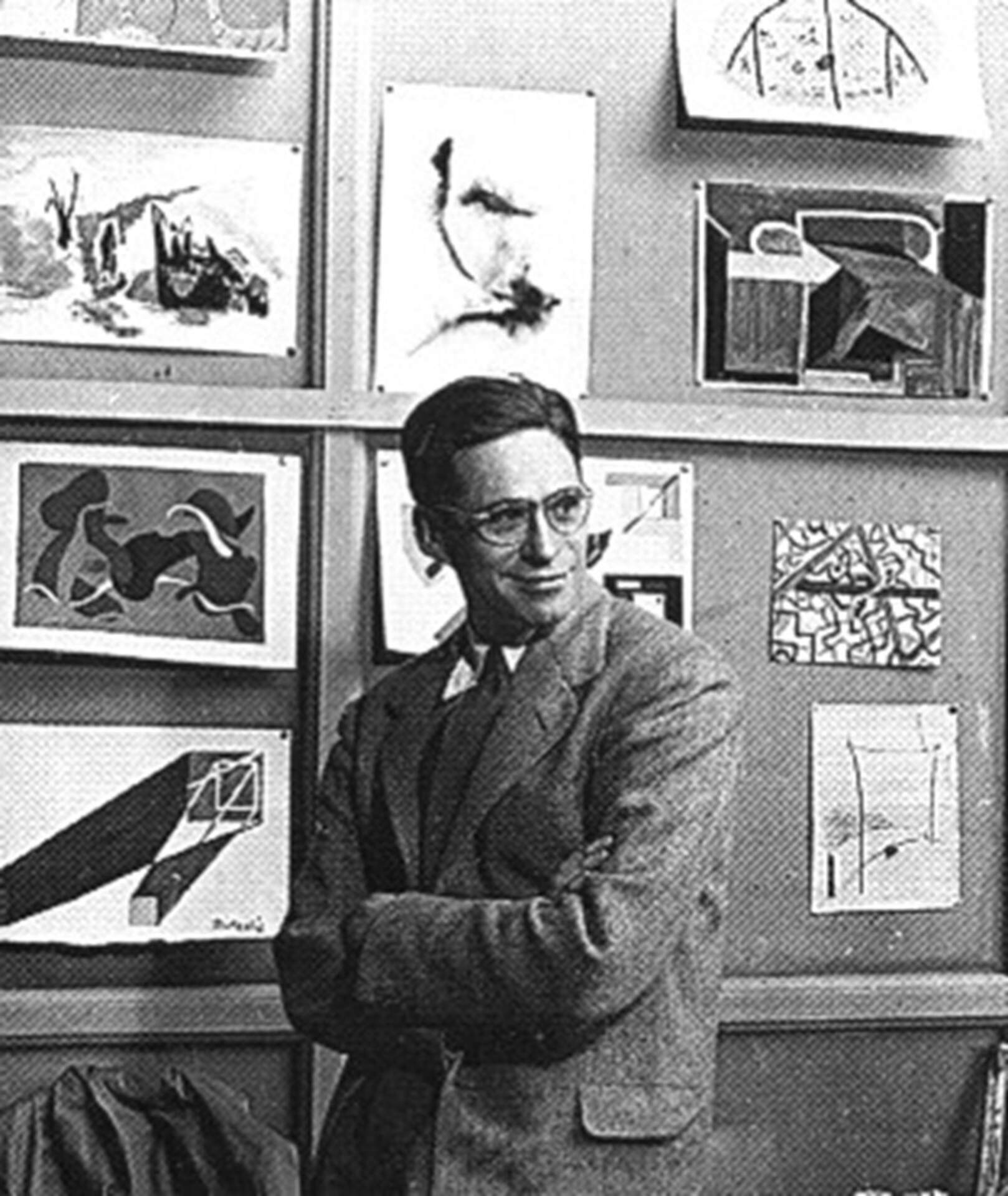
Lewis W. Rubenstein (photo from http://www.jbuff.com/lrub.htm)
Lewis W. Rubenstein
(1908-2003)
American
Born: Buffalo, New York, USA
https://lewisrubensteinartist.com/artists-life/chronological-biography/
See the above for a complete chronological biography, including his work as a muralist (a large fresco at the Fogg Art Museum at Harvard, for example), friendships with Orozco and other artists, international travel, and teaching at Vassar. It starts with his roots in Buffalo, written by Rebecca E. Lawton, Curator of Collections, Frances Lehman Loeb Art Center, Vassar College, Poughkeepsie, NY.
1908-1918
Rubenstein with his parents c. 1910
December 15: Lewis William Rubenstein born in Buffalo, New York, the oldest of three children of Emil Rubenstein, a lawyer, and Hannah Hirschman Rubenstein. His paternal grandparents, Catherine Mayerberg Rubenstein and Louis Wolf Rubenstein emigrated from Lithuania, settling in Buffalo in 1867 and 1870 respectively. Rubenstein’s mother’s family is from Cincinnati. With his two younger sisters, Frances and Rena, Rubenstein is raised in a cultural environment. He loves to play sports and draws continuously in his free time. His interest in art is nurtured by his uncle, Jay (Harry) Rubenstein, who enjoys painting as an avocation, and also by an older cousin, Helen (Nessa) Cohen, a sculptor. One of Rubenstein’s early memories is creating continuous drawings using colored crayons. He also recalls making humorous cartoons, comic-strip style.
c. 1920-1926
Attends evening classes at Albright Gallery Art School in Buffalo where he learns to draw in charcoal from casts. He is fascinated by books on Japanese art which he reads at the Grosvenor Library. Rubenstein’s admiration for the Saturday Evening Post illustrations inspires his ambition to become an illustrator. While in high school, Rubenstein makes comics for the school’s newspaper, as well as for his own enjoyment and the amusement of his family and friends.
1926-1930
Enters Harvard College, class of 1930. Not drawn to his father’s profession, Rubenstein resists his father’s suggestion to prepare for a career in law. He chooses instead to major in fine arts. While a sophomore, Rubenstein receives the Bower Prize for painting. The award convinces his father to allow him to become an artist. Through Arthur Pope, a professor of Fine Arts at Harvard, and Kojiro Tomita, curator of Asiatic Art at the Museum of Fine Arts, Boston, Rubenstein becomes acquainted with the museum’s impressive collection of scroll paintings. Since Harvard’s fine arts curriculum does not allow him the opportunity to concentrate in studio work, Rubenstein leaves college with a strong desire to further his training as an artist. Graduates cum laude.